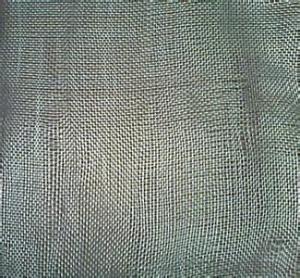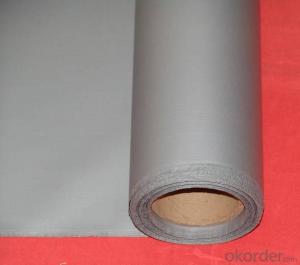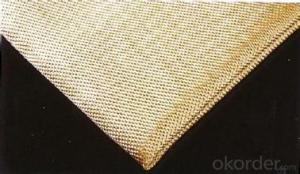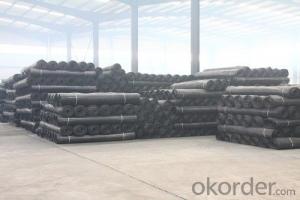High Silica Glass Fiber Cloth Fabric 2015
- Loading Port:
- China Main Port
- Payment Terms:
- TT OR LC
- Min Order Qty:
- -
- Supply Capability:
- -
OKorder Service Pledge
OKorder Financial Service
You Might Also Like
Quick Details
| Place of Origin: | Brand Name: | Model Number: | |||
| Application: | Weight: | Surface Treatment: | |||
| Width: | Weave Type: | Yarn Type: | |||
| Alkali Content: | Standing Temperature: |
Packaging & Delivery
| Packaging Detail: | 50m/carton |
| Delivery Detail: | about 20days |
Specifications
1. High silica glass fiber cloth.
2. High temperature resistance.
3. Instant working temp.: 1400C degree
High Silica Glass Fiber Cloth Suppliers
High Silica Glass Fiber Cloth Description:
1. It is woven by high SiO2 content fiberglass yarn with specially formulated acid treatment.
2. It is a economic silica cloth suitable for continuous use at 1650°F (900°C), and able to withstand short term exposure up to 2200°F (1200°C).
3. Additional polyurethane coating or vermiculite coating will enhance the fabrics unmatched abrasion resistance and tensile strength.
- Q:Is non-woven fabric and fiberglass all the same?
- If fiberglass is made in the non-woven production line, it belongs to a kind of non-woven fabric
- Q:Can fiberglass fabric be used for clothing?
- Yes, fiberglass fabric can be used for clothing, but it is not a common or popular choice for everyday clothing. Fiberglass fabric is primarily used in industries such as aerospace, automotive, and construction due to its unique properties. It is known for its high strength, durability, and heat resistance. While these properties make fiberglass fabric suitable for protective clothing in certain professional settings, such as firefighting or welding, it is not ideal for regular clothing due to its stiffness and potential discomfort against the skin. Additionally, fiberglass fabric is not very breathable and does not provide insulation, which further limits its suitability for clothing purposes. Instead, clothing materials such as cotton, wool, silk, and synthetic fibers like polyester or nylon are more commonly used due to their comfort, breathability, flexibility, and aesthetic qualities. These materials offer a wider range of options for fashion and everyday wear, while still providing comfort and protection to the wearer.
- Q:Do fiberglass fabrics have any electrical conductivity properties?
- No, fiberglass fabrics do not have any electrical conductivity properties. Fiberglass is an insulator and does not conduct electricity. This property makes it suitable for various applications where electrical insulation is required, such as electrical insulation sleeves, circuit boards, and protective covers for electrical equipment. Additionally, fiberglass fabrics are often used in industries where insulation from heat and fire is necessary, further highlighting their non-conductivity to electricity.
- Q:What are the different fiberglass fabric coatings for oil resistance?
- There are several different fiberglass fabric coatings available that provide oil resistance. Some of the commonly used coatings include: 1. Neoprene: Neoprene coatings are highly resistant to oil and offer excellent durability. They provide a strong barrier against oil penetration and are commonly used in applications where oil resistance is essential. 2. Nitrile: Nitrile coatings also offer excellent oil resistance and are known for their resistance to chemicals and abrasion. They provide a reliable barrier against oil and are often used in industrial settings where exposure to oil is frequent. 3. PVC: PVC coatings are resistant to oil and provide good durability. They offer moderate oil resistance and are commonly used in applications where a balance of oil resistance and flexibility is required. 4. Polyurethane: Polyurethane coatings offer good oil resistance and are known for their flexibility and abrasion resistance. They provide a strong barrier against oil penetration and are commonly used in applications where both oil resistance and flexibility are important. It's important to note that the effectiveness of these coatings may vary depending on the specific application and the type of oil or chemical being used. It is always recommended to consult with the manufacturer or supplier to determine the most suitable coating for your specific needs.
- Q:How does fiberglass fabric perform in dimensional stability?
- Fiberglass fabric is known for its excellent dimensional stability. It has the ability to maintain its shape and size, even under extreme temperature fluctuations or mechanical stress. This property makes fiberglass fabric highly resistant to stretching, shrinking, or warping, ensuring that it retains its original dimensions over time. Additionally, fiberglass fabric is often used in applications that require precise and consistent dimensions, such as aerospace, automotive, and construction industries, due to its exceptional dimensional stability.
- Q:How is fiberglass fabric used in the production of boat hulls?
- Fiberglass fabric is commonly used in the production of boat hulls due to its strength, durability, and lightweight properties. It is typically applied as a reinforcing material in a process called fiberglass layup. Layers of fiberglass fabric are saturated with resin and then molded onto a boat's hull structure. This combination creates a strong and rigid composite material that provides excellent resistance to water, weather, and impacts, making it ideal for boat construction.
- Q:Can fiberglass fabric be used for architectural applications?
- Yes, fiberglass fabric can be used for architectural applications. Fiberglass fabric is a versatile material that offers several advantages for architectural projects. It is lightweight, flexible, and has high tensile strength, making it suitable for various applications such as roofing, cladding, and insulation. Fiberglass fabric is also resistant to fire, chemicals, and UV rays, making it durable and long-lasting. Additionally, fiberglass fabric can be easily molded into complex shapes, allowing architects to create unique designs and structures. Overall, fiberglass fabric is a popular choice in architectural applications due to its numerous benefits and adaptability.
- Q:Is fiberglass fabric resistant to oil and grease?
- Yes, fiberglass fabric is generally resistant to oil and grease.
- Q:How does fiberglass fabric perform in high-vibration environments?
- Fiberglass fabric performs exceptionally well in high-vibration environments due to its unique properties. The inherent stiffness and high strength-to-weight ratio of fiberglass make it highly resistant to vibrations and mechanical stress. When subjected to vibrations, fiberglass fabric effectively absorbs and dissipates the energy, reducing the impact and minimizing potential damage. One of the key advantages of fiberglass fabric is its excellent damping characteristics. It possesses the ability to absorb and dampen vibrations, preventing them from propagating and amplifying throughout the structure. This quality is crucial in high-vibration environments where excessive oscillations can lead to structural fatigue, reduced performance, or even failure. Additionally, fiberglass fabric is known for its exceptional durability and resistance to corrosion, which further enhances its performance in high-vibration environments. This material can withstand prolonged exposure to intense vibrations without experiencing degradation or loss of mechanical properties. Moreover, fiberglass fabric offers versatility in design and application. It can be easily molded or woven into various shapes and sizes, allowing it to be tailored to specific needs in high-vibration environments. Whether used as a reinforcement material in composites or as a standalone fabric, fiberglass provides reliable and long-lasting performance under demanding conditions. In summary, fiberglass fabric excels in high-vibration environments due to its stiffness, strength, damping properties, durability, and resistance to corrosion. Its ability to absorb and dissipate vibrations, combined with its versatility in design, makes it an ideal choice for applications where mitigating vibration-induced issues is crucial.
- Q:Home improvement how to do waterproof acceptance?
- After the toilet decoration is completed, the toilet outlet is blocked, and at the entrance to the bathroom set a 25 cm high water "Hom", and then poured into the 20 cm high water in the bathroom. After 24 hours, check the walls and the ground for leaks. The experiment of water release test is the key to ensure the quality of waterproof engineering in toilet.
1. Manufacturer Overview |
|
|---|---|
| Location | |
| Year Established | |
| Annual Output Value | |
| Main Markets | |
| Company Certifications | |
2. Manufacturer Certificates |
|
|---|---|
| a) Certification Name | |
| Range | |
| Reference | |
| Validity Period | |
3. Manufacturer Capability |
|
|---|---|
| a)Trade Capacity | |
| Nearest Port | |
| Export Percentage | |
| No.of Employees in Trade Department | |
| Language Spoken: | |
| b)Factory Information | |
| Factory Size: | |
| No. of Production Lines | |
| Contract Manufacturing | |
| Product Price Range | |
Send your message to us
High Silica Glass Fiber Cloth Fabric 2015
- Loading Port:
- China Main Port
- Payment Terms:
- TT OR LC
- Min Order Qty:
- -
- Supply Capability:
- -
OKorder Service Pledge
OKorder Financial Service
Similar products
New products
Hot products
Hot Searches
Related keywords


























